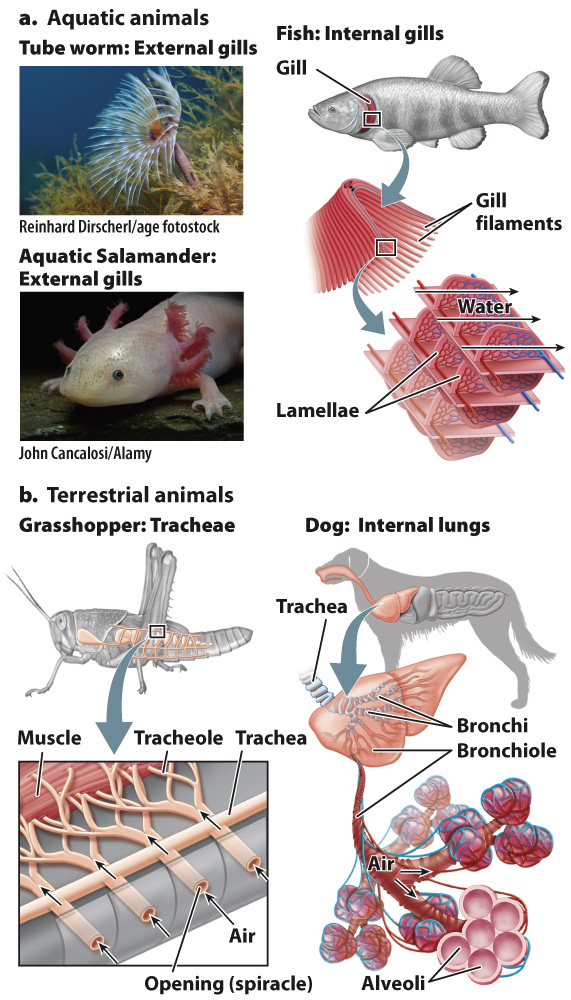39.2 Respiratory Gas Exchange

All animals obtain O2 from the surrounding air or water. Aquatic animals like crabs, aquatic salamanders, and fish that take in O2 from water breathe through gills, highly folded delicate structures that facilitate gas exchange with the surrounding water (Fig. 39.4a). Some animals, such as aquatic frogs and terrestrial adult salamanders, breathe through their skin. In contrast, many terrestrial animals, such as reptiles, certain terrestrial salamanders, birds, and mammals, have internal lungs for gas exchange (Fig. 39.4b). Internal respiratory exchange surfaces are adaptations that protect the lung surfaces from drying out in a terrestrial environment. Instead of lungs, terrestrial insects evolved a system of air tubes called tracheae that branch from openings along their abdominal surface into smaller airways. These smaller airways, termed tracheoles, supply air directly to the cells within their bodies.
For both aquatic and terrestrial animals, ventilation supplies O2 to gas exchange surfaces, and then O2 crosses the surface through diffusion. Diffusion is much slower over longer distances than the bulk flow of ventilation. How can the rate of diffusion through the gas exchange surface in lungs or gills keep up with the rate of O2 supplied by ventilation? The gas exchange surface must have a large surface area and be extremely thin. The respiratory surfaces of more complex and active animals are highly folded, creating a large surface area within a small space. These surfaces are also only one or two cell layers thick, providing a diffusion distance of as little as 1 to 2 µm. In fact, this short distance is all that separates the air you breathe into your lungs from the bloodstream into which O2 diffuses.